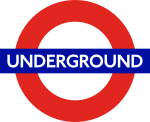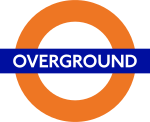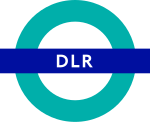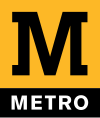Unit 10.1
Modes of transport: Urban and interurban transport
Advertising
Urban Transport Networks
- The United Kingdom has a great transportation network in terms of metro, buses and trams.
- Public transport services vary from region to region and town to town.
- Usually, in larger cities, it is quite well organized, but in smaller towns, there may be communication problems.
- Buses:
- Buses are one of the cheapest transport.
- Coaches provide long-distance links throughout the UK.
- National: Megabus, National Express, Scottish Citylink, TrawsCymru, Ulsterbus.
- There are also regional coaches.
- There are single-decker and double-decker buses.
- Metro is railroad designed for passenger transport, with a capacity allowing for high-traffic traffic, multi-carriage trains and driving on high speed. It usually goes underground. The biggest and most known metro in the United Kingdom is London Underground.
- Tram is a passenger vehicle powered by electricity conveyed by overhead cables, and running on rails laid in a public road.
- Urban rail is a rail service between the business district and suburbs.
- A light rail is a form of urban rail looking similar to a tram, but operating at a higher capacity and speed.
- Night Bus is a public transport service operating during the night.
Public transport
- Buses play a major role in public transport.
- You can entry and exit bus only by the entrance next to the driver.
- In big cities on working days, they drive quite often – every few minutes.
- You can usually buy tickets directly from the driver or in newspaper stores.
- You can buy a monthly, 3-month or annual passes.
- London Buses:
- They operate the following areas: Greater London, Berkshire, Buckinghamshire, Essex, Hertfordshire, Kent, Surrey.
- All buses in London are cash-free. You can use Oyster card, Travelcard, Freedom Pass or Bus and Tram pass or pay with contactless payment.
- To check timetables visit tfl.gov.uk.
- There are Hail and Ride sections on some of the routes. It means that there are no certain bus stops, to come off the bus you need to use the stop button or inform the driver. You will be informed when the bus is entering it.
- When your stop is displayed and announced, you have to press the bell once to inform the driver that you want to get off.
- There are also 24-hour routes.
- London Night Bus network:
- Serve only Greater London.
- It operates from 11 p.m. to 6 a.m.
- Night bus routes are mostly related to the daytime route and the same number. There are a few N-prefixed route numbers and they have no relation to the daytime route with the same number.
- Lothian Buses:
- Operate the majority of bus services in Edinburgh.
- It works with the flat-fare system in which you pay the same price for a ticket no matter how long is your journey.
- You can obtain Ridacard bus pass which is a pre-paid smartcard giving unlimited travel on regular daytime, night bus services and Edinburgh Trams services.
- Maps, timetables and more information about tickets can be found at lothianbuses.com
- Cardiff Bus:
- Is the main operator of bus transport in Cardiff.
- It works with a flat-fare system.
- Special fares apply for travel between Cardiff and Barry and also for Newport.
- You can obtain Iff card bus pass. You can either: add credit to buy tickets when you want, buy and top-up a weekly, monthly or annual ticket and sign up for Direct Debit scheme.
- Maps, timetables and more information can be found at cardiffbus.com
- Translink Metro:
- Is the main bus operator in Belfast. It serves the city and the nearer suburbs.
- To find buses that fit your journey visit translink.co.uk/timetables, it includes also other bus companies like Ulsterbus.
- You can pay as you go by paying onboard bus services (cash only), buy tickets in ticket machines or pay at station.
- Translink offers many travel cards, information about all of them can be found here translink.co.uk/UsingTranslink/ticketsandtravelcards
- Rapid transit:
- London:
- London Underground (the Tube)
- It is a public rapid transit system serving London and some parts of the nearest counties of Buckinghamshire, Essex and Hertfordshire.
- It is divided into nine zones.
- It closes overnight during the week but Central, Jubilee, Northern, Piccadilly, and Victoria lines operate during Friday and Saturday nights.
- The first trains run from about 05:00 a.m. to around 01:00 a.m.
- It is closed on Christmas Day and has limited services during other bank holidays.
- During peak hours, stations can get so crowded that they need to be closed.
- Oyster pay-as-you-go is valid.
- Travelcards, that cover the appropriate zones, are valid.
- Contactless payment is enabled as a way of paying.
- Visit tfl.gov.uk for checking fares, timetables or planning your journey. Timetables are under section more.
- Dockland’s Light Railway (DLR)
- It is an automated light metro system serving the Docklands area of East London.
- The system is part of the London fare zone system, and Travelcards that cover the appropriate zones are valid.
- Oyster pay-as-you-go is valid.
- NFC enabled bank cardholders are valid.
- Tickets can be also purchased from ticket machines at the entrance to the platforms.
- You can buy one-day and season DLR-only “Rover” tickets or one-day DLR and City Cruise riverboats “Rail and River Rover” tickets.
- Visit tfl.gov.uk for checking fares, timetables or planning your journey. Timetables are under section more.
- London Underground (the Tube)
- Glasgow Subway:
- It is an underground light rapid transit line in Glasgow, Scotland.
- Tickets do not use a distance-based fare structure.
- Tickets are available at any station in a ticket machine or the ticket office.
- Smartcard offers best value tickets – including season tickets. Anonymous Smartcards can be purchased in any Subway.
- Visit spt.co.uk for checking fares, timetables or planning your journey.
- Tyne and Wear Metro:
- Serve Newcastle upon Tyne, Gateshead, South Tyneside, North Tyneside and Sunderland in Tyne and Wear.
- Services operate from around 5:30 a.m. until midnight.
- To check timetables or ticket prices visit nexus.org.uk
- London:
- Trams and light rail systems
- Blackpool has Blackpool Tramway system which consists of one line from Blackpool to Fleetwood. Tickets are purchased from the conductor on board of each tram.
- East London has Dockland’s Light Railway, an automated light metro system.
- South London has Tramlink. It has three lines: New Addington to West Croydon, Wimbledon to Beckenham Junction, Wimbledon to Elmers End. TfL Bus Passes. Oyster card and EMV Contactless payment are accepted. For more information visit: fl.gov.uk/modes/trams/.
- Edinburgh has Edinburgh Trams. It operates between York Place in New Town and Edinburgh Airport. Ticketing and fares are integrated with Lothian Buses.
- Greater Manchester has Metrolink. The network consists of seven lines. Tickets cannot be purchased on board and must be purchased from a ticket vending machine. For the map, timetables and ticket information visit tfgm.com/public-transport/tram.
- Nottingham has Nottingham Express Transit. It has two lines: Toton Lane tram stop to Hucknall and Clifton to Phoenix Park. For map, timetables and ticket information visit thetram.net.
- Sheffield has Supertram. It has four lines. Period tickets, PlusBus and period SYPTE tickets are valid. For map, timetables and ticket information visit stagecoachbus.com/supertram.
- Newcastle has Tyne & Wear Metro. To check timetables or ticket prices visit nexus.org.uk.
- West Midlands has West Midlands Metro. It has one route between the cities of Birmingham and Wolverhampton. To check timetables or ticket prices visit westmidlandsmetro.com.
- Examples of urban rails
- Belfast – Belfast Suburban Rail serves the metropolitan area of Greater Belfast and some of surrounding towns with three lines.
- Liverpool‘s Merseyrail is a commuter rail network serving Liverpool and the surrounding Liverpool City Region.
- Point-to-point or return tickets can be purchased from staffed offices or ticket machines.
- It is integrated with Merseytravel’s City Region-wide pass system.
- To check timetables, plan your journey or check tickets prices visit merseyrail.org.
- London
- London Overground – suburban rail network serving London and its surrounding area. It has nine different routes. Ticketing is a mix of paper, Oyster cards, electronic smart cards and contactless payment cards for “pay-as-you-go” travel. To find timetables, check tickets visit tfl.gov.uk.
- London Underground – is a public rapid transit system serving London and some parts of the nearest counties. Visit tfl.gov.uk for checking fares, timetables or planning your journey.
- Newcastle has Tyne & Wear Metro. To check timetables or ticket prices visit nexus.org.uk.
- Park and Ride are parking lots with public transport connections that allow people heading to city centres to leave their vehicles and transfer to public transport.
Icons to designate public transport in different cities
- London Underground in London.

- London Overground in London.

- Dockland’s Light Railway in London.

- Tramlink in London.
- Glasgow Subway in Glasgow.

- Tyne and Wear Metro in Newcastle.

- Merseyrail in Liverpool.
Exercises
Ambassadors
Open TextBooks are collaborative projects, with people from all over the world bringing their skills and interests to join in the compilation and dissemination of knowledge to everyone and everywhere.
Become an Ambassador and write your textbooks.
Online Teaching
Become a Books4Languages Online tutor & teacher.
More information here about how to be a tutor.



